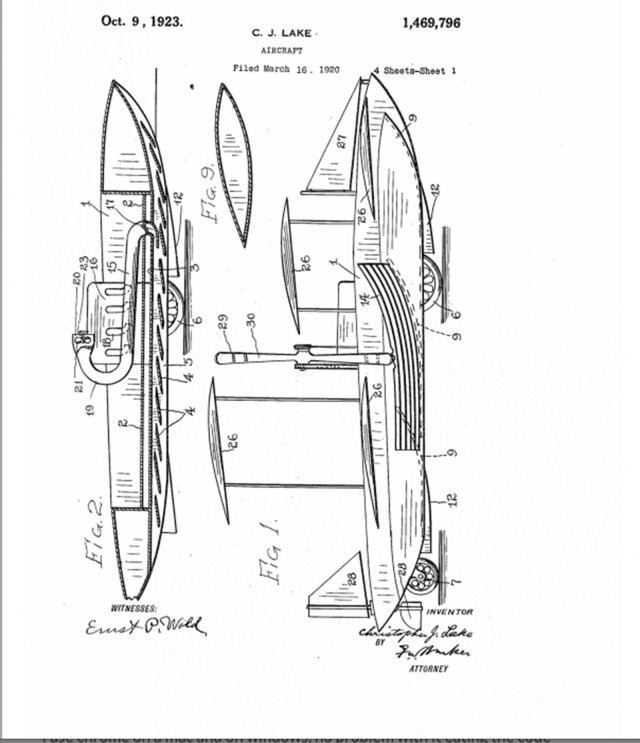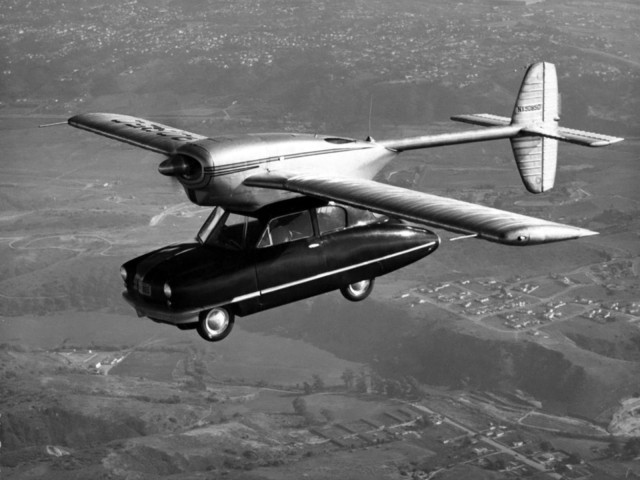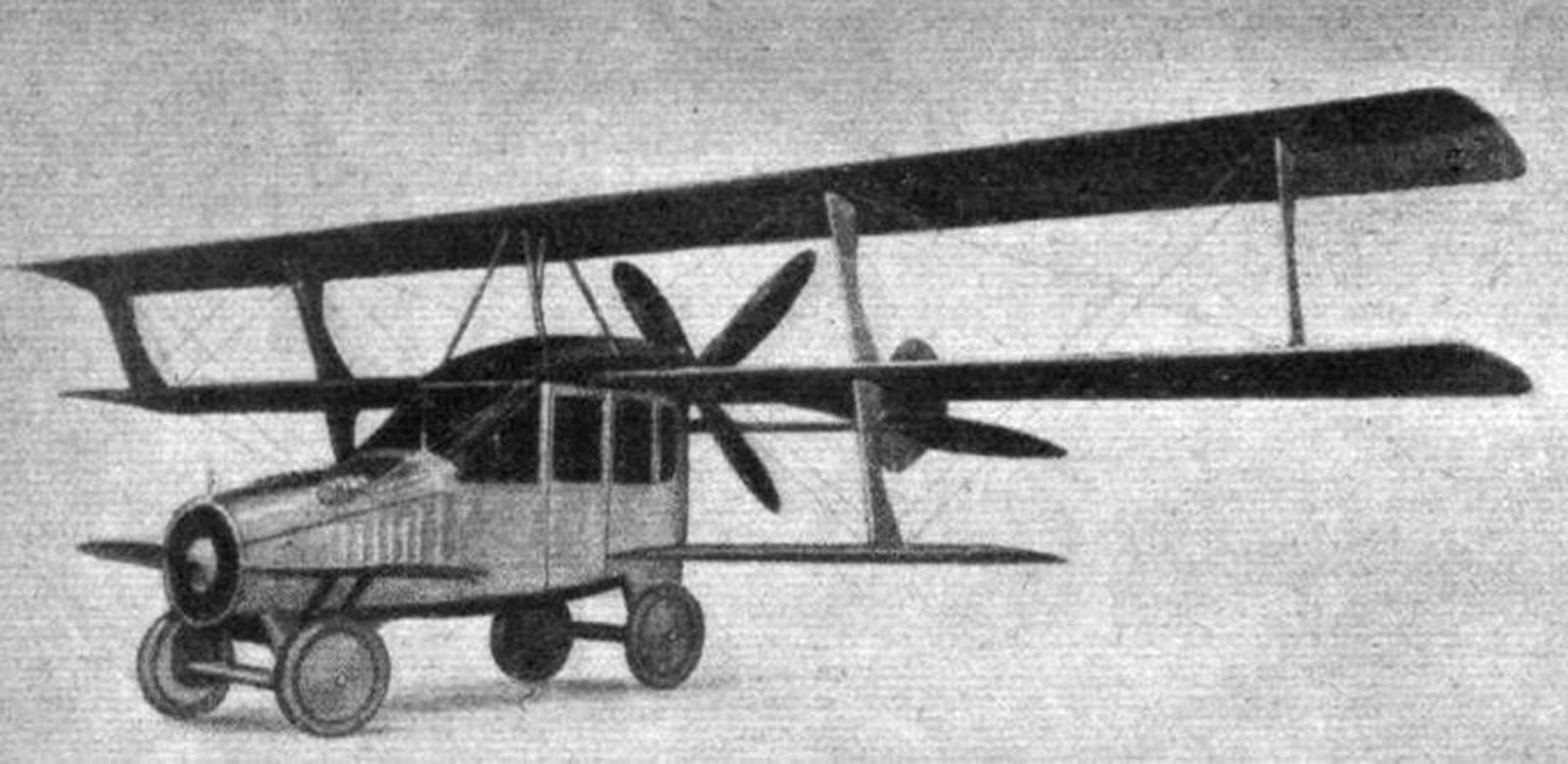The first airplane was in flight for 12 seconds and flew 120 feet. But it was enough to send imaginations airborne.
 Not long after Kitty Hawk, aviators were trying to figure out how to fly a car.
Not long after Kitty Hawk, aviators were trying to figure out how to fly a car.
Glenn Curtiss was the first with the Autoplane in 1917. It had a triwing, looked like a Model T and hopped. Before he could actually get its wheels off the ground, World War I broke out and Curtiss diverted his energy toward building aircraft for the U.S. Army.
While we have figured out how to put people in space, we’re still tinkering with a future that has yet to arrive. If you’re waiting for George Jetson’s future, consider that the car his family flew around in was a 2062 model.
A quick search of U.S. patents reveals dozens of designs — some of which actually made it into the air. A handful of companies around the world appear to be poised to take the flying car further than ever as they lobby lawmakers to change the rules governing roads and airspace.

The “roadable aircraft,” as it’s called, has had a turbulent history. Designing one is like marrying an apple with an orange, with results often compromising performance of either the car or the plane. Promising prototypes set for production crashed. Some small companies ran into bad timing, such as war, the Great Depression or, in one instance, the oil shortage of the 1970s.

One of the more notable attempts was the AVE Mizar, a mashup of a Ford Pinto and Cessna Skymaster.
Two Flying Pintos were built and one was even going to be used for a getaway scene in a 1974 James Bond film. But the plane fell apart in midair while on a test flight in 1973 and crashed, killing two, including the designer.
Inventors have worked off two basic design concepts: an all-in-one model, with wings that fold for driving, or a modular model with detachable aeronautic components. The pilot/driver leaves the pieces in a hangar and drives the car to and from the airport.
Neither will get you out of a traffic jam, though some designs and prototypes include a vertical-lift engine that could potentially leave rush-hour snarls behind.
“The biggest problem is they are barely acceptable cars and not very good airplanes,” said Jim Campbell, a pilot and editor and chief of Aero News Network. “From a stability and control standpoint, there are too many compromises. It’s fascinating technology. They’re getting closer all the time but the test pilot in me says, ‘Not yet.’ ”
A Massachusetts company is aiming to be the first to successfully produce a commercial roadable aircraft.
Terrafugia, founded in 2006 by MIT grad students, built and flew is first car/plane craft in 2009. A second prototype of the aircraft, called the Transition, was built in 2012 and has had more than 100 hours of test flights. A production prototype has just begun road tests but the company hopes to have the first 10 Transitions to buyers within two years, said Vanessa Blakely, a pilot and Terrafugia’s corporate communications head. Nearly 100 people have placed deposits on the vehicle.

The Transition has wings that fold in and is the first vehicle to meet both road- and air-safety standards, Blakeley said. The Transition has airbags and an emergency parachute.
She said roadable aircraft design got new life in 2004 when the Federal Aviation Administration created a light sport aircraft category. The engineering challenges of the past, mainly getting a road vehicle’s heft light enough to fly, can now be solved with composite materials, including carbon fiber, that are lightweight and stronger than steel.
“It is isn’t the flying car everyone dreams of,” Blakeley said. “It still has to take off and land at an airport but it is the best of what is available now. It’s not the future, but the Transition is a very important component. It is serving as a process to build for this untouched market. No one makes a commercially sustainable flying car.”
The Transition’s top speed is 100 mph and the vehicle has a range of just over 400 miles (getting 35 miles to the gallon on the road). To transition from street to flight takes 40 seconds.
The sticker price is $279,000 but the $10,000 deposit is refundable, according to Terrafugia’s website.
Terrafugia already has a design on the “dream car” that Blakeley said is driving and flying in our minds. The TF-X will be street-legal with a fixed wing and vertical takeoff and landing. But that future is another eight to 12 years out.



